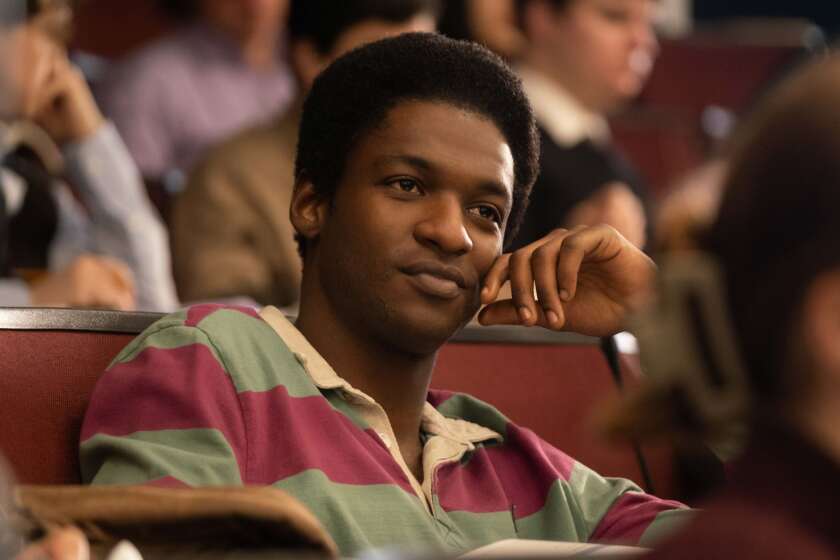The U.S. Campaign Against John Lennon
In 1972, the Kennedy Center opened in Washington with the premiere of Leonard Bernstein’s oratorio “Mass.” No doubt President Nixon would have stayed away from the dedication of any institution named for his archrival. Luckily, J. Edgar Hoover’s FBI provided him with a handier excuse. According to Bernstein’s eldest daughter, Jamie, the FBI had learned from a “source” that Bernstein had inserted a coded anti-Nixon, anti-Vietnam War message into the libretto of “Mass.” As the oratorio played to its conclusion, the phrase they feared was sung out in code--Latin. Dona nobis pacem.
It’s a short step down the aisle from the “Give us peace” of the Latin mass to the “Give peace a chance” that connected forever the antiwar movement to John Lennon, a “former member of the Beatles singing group,” as Hoover identified him, in a 1972 memo to the Nixon White House. Thanks to information provided early in February by Sen. Strom Thurmond, who was a member of the Internal Security Subcommittee of the Judiciary Committee, Hoover had learned that Lennon was at the center of a plan organized by the radicals Rennie Davis and Jerry Rubin, among others, to rally American youth against Nixon’s 1972 reelection campaign and disrupt the Republican convention in San Diego.
It is the 100 pages of declassified FBI and Immigration and Naturalization Service documents covering the 11-month FBI investigation of Lennon that make up the better part of Jon Wiener’s “Gimme Some Truth.”
A historian and columnist, Wiener set off on his quest for these documents in 1981, when he petitioned the Reagan administration under the Freedom of Information Act. Sixteen years, four Presidents and several ACLU attorneys later, the FBI settled the case, releasing all but 10 of the documents and paying $204,000 in court costs and attorney fees. In his superb 1984 “Come Together,” an account of Lennon’s own quest to bring aesthetics and political action into harmony under the banner of rock ‘n’ roll, Wiener detailed many Orwellian moments from the case’s early days, including memos from FBI sources commenting on the pitch problems of Yoko Ono and the linguistic abilities of the pet parrot of one rally organizer that “interjects ‘Right On’ whenever the conversation gets rousing.”
What “Gimme Some Truth” adds to the record is both ponderous and appalling. Appeal by appeal, Wiener describes the tortoise-like progress of the ACLU team as it follows the courses available under the FOIA. Even President Clinton’s 1995 executive order on classification of documents, declaring that “we will no longer tolerate the excesses of the current system,” did little to speed the process. “If the head of the FBI wanted to consider the public interest in release of a particular document,” Wiener says in a gloss, “the executive order permitted him to do so, but it didn’t require him to do so, and it didn’t give the public any right to appeal to the courts a decision not to do so.”
Shocking? The answer, in a democracy, of course, must be yes. Although the FBI closed its investigation in December 1972, four months later Judge Ira Fieldsteen ruled that Lennon had two months to leave the country. It took three years and a countersuit by Lennon against the INS for a U.S. court of appeals to overturn that deportation order.
For those inclined to file the government’s actions under the excesses of the ‘70s, it is sobering to note that only last month, the INS released an Egyptian named Nasser Ahmed after holding him in a New York jail for 3 1/2 years based on “secret evidence” that he was linked to terrorists in the United States and Egypt. “Genuine ‘national security,’ ” Wiener concludes, “requires a vibrant democracy and a well-informed citizenry, not a culture of secrecy.” Twenty years after Lennon’s death, let us all come together and sing in loud, millennial Latin--Amen!
More to Read
The biggest entertainment stories
Get our big stories about Hollywood, film, television, music, arts, culture and more right in your inbox as soon as they publish.
You may occasionally receive promotional content from the Los Angeles Times.






